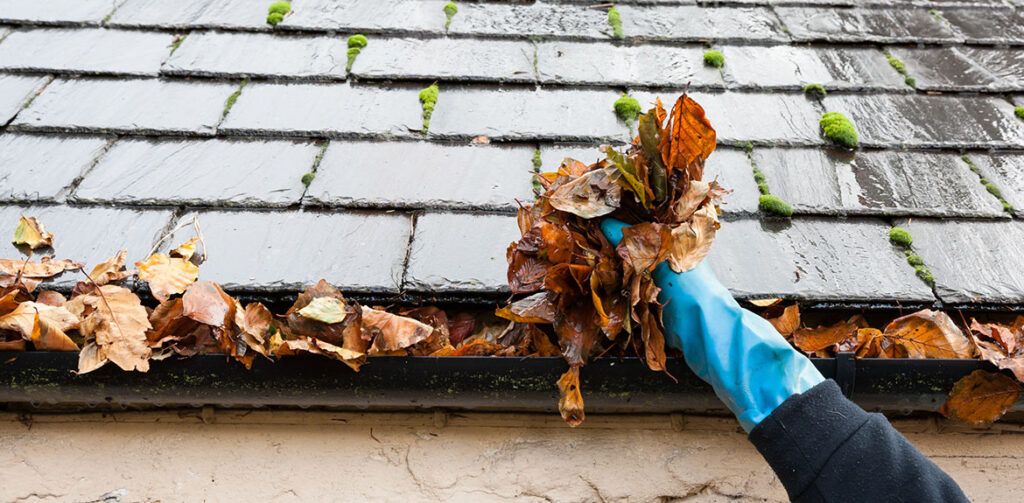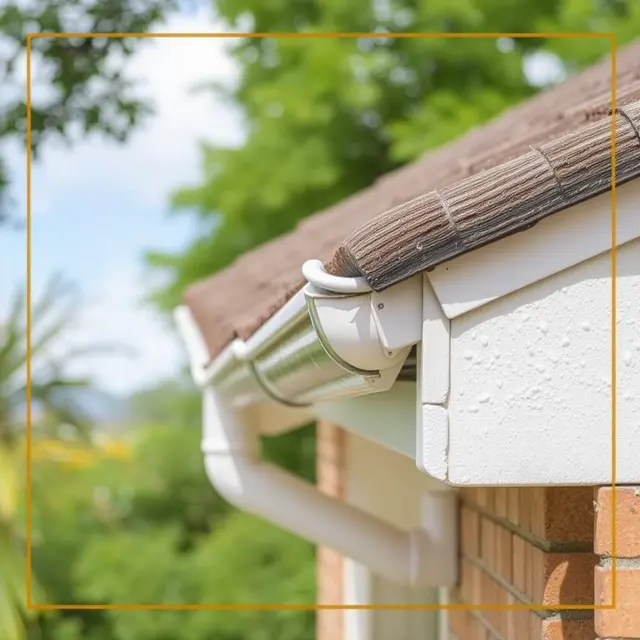In the United Kingdom, where rain is less of a weather event and more of a lifestyle, your gutter system works overtime. The frequent precipitation that characterises the British climate means that proper gutter maintenance isn’t just recommended—it’s essential for protecting your home from water damage. But how often should UK homeowners be tackling this necessary chore? Let’s explore the optimal maintenance schedule for gutters in Britain’s unique climate.
The Importance of Gutters in the UK Climate
The British weather presents specific challenges for gutter systems:
- Consistent rainfall throughout the year rather than concentrated seasonal downpours
- High humidity levels promoting moss and algae growth
- Frequent wind that deposits debris in gutters even in urban areas
- Moderate temperatures that rarely freeze but provide ideal conditions for organic matter to decompose in gutters
These conditions create a perfect storm for gutter problems if maintenance is neglected.
UK-Specific Factors Affecting Cleaning Frequency
Tree Coverage in British Gardens
The UK’s love affair with gardening means many homes are surrounded by:
- Deciduous trees that shed leaves in autumn
- Evergreen shrubs and conifers that drop needles year-round
- Flowering plants that release seeds and petals
- Mature oaks, ash, and sycamores with constant debris shedding
The traditional British garden, while beautiful, can be demanding on your gutter system.
UK Property Types and Gutter Considerations
- Victorian and Edwardian terraces: Often feature cast iron guttering requiring special maintenance
- 1930s semi-detached houses: Typically have original clay or replacement uPVC guttering
- Modern developments: Usually fitted with uPVC systems that may collect static and attract dirt
- Listed buildings: May have heritage guttering systems with specific maintenance requirements
Regional Variations Across Britain
- Scotland and Northern England: Higher rainfall and stronger winds necessitate more frequent cleaning
- South West England: Mild, damp conditions promote faster moss and algae growth
- East Anglia: Drier climate but agricultural dust can create muddy deposits
- London and Urban Areas: Pollution and soot can create stubborn gutter residue
Recommended Cleaning Schedule for UK Homes

Standard UK Schedule (Typical British Home)
- Mid-Autumn (October): Essential cleaning after initial leaf fall
- Late Autumn (November-December): Secondary cleaning after leaves have fallen
- Spring (March-April): Clearing winter debris and checking for frost damage
Enhanced UK Schedule (Homes with Mature Trees)
- Early Autumn (September): Preventative clearing before peak leaf fall
- Mid-Autumn (October): Main autumn cleaning
- Late Autumn (December): Final check before winter weather
- Early Spring (March): Post-winter cleaning
- Early Summer (May-June): Clearing seeds, blossoms, and spring debris
Minimal UK Schedule (Urban Homes with Few Trees)
- Late Autumn (November): Annual main cleaning
- Spring (March): Quick check and clear if necessary
UK Weather Events Requiring Additional Attention
Even with a regular schedule, certain weather events common to Britain may necessitate extra gutter checks:
- After prolonged stormy periods (particularly Atlantic storms in winter)
- Following unusually heavy snowfall and thaw cycles
- After strong autumn winds that accelerate leaf fall
- During extended dry periods when gutters may crack or warp
Signs Your UK Home Needs Immediate Gutter Attention
Look out for these telltale British gutter problems:
- Water overflow during typical British drizzle (not just heavy downpours)
- Damp patches appearing on exterior walls, particularly common in solid-wall properties
- Green algae streaks down brickwork or rendering
- Plants establishing in gutters (particularly moss and small ferns in damper regions)
- Birds repeatedly visiting gutters (nesting material collection)
DIY vs. Professional Cleaning: The British Context
DIY Considerations for UK Homeowners
- Ladder safety is paramount, especially on uneven British garden terrain
- Working at height regulations should be considered
- UK weather can be unpredictable, making scheduling DIY cleaning challenging
- Heritage homes may require specialist knowledge
Professional Services in the UK
- Costs range from £70-£150 for an average terraced or semi-detached house
- Many UK companies offer annual service contracts with discounted rates
- Look for professional cleaning services registered with the Property Care Association
- Consider specialists if you have cast iron, copper or heritage guttering
British Gutter Innovations
UK homeowners can benefit from these technologies:
- Hedgehog Brush Systems: Particularly effective for the UK’s small, frequent debris
- Leaf guards designed for British oak and sycamore leaves: Different from international designs
- UV-resistant gutter guards: Specifically rated for UK light conditions
- Anti-moss treatments: Formulated for the damp British climate
The Hidden Costs of Neglect for UK Properties
Neglecting gutters in Britain’s damp climate can lead to significant issues:
- Rising damp in solid wall properties (extremely common in pre-1930s housing)
- Damage to lime mortar joints in traditional builds
- Timber frame deterioration in historic properties
- Cavity wall insulation failure in modern homes
- Garden wall and patio subsidence from poorly directed water flow
Special Considerations for UK Listed Buildings
If your home is listed or in a conservation area:
- Guttering may need to be maintained using specific methods
- Replacement parts might require conservation officer approval
- Some cleaning methods may be restricted
- Period-appropriate materials might be mandatory for repairs
Conclusion: A British Approach to Gutter Maintenance
For most UK homes, twice-yearly gutter cleaning represents the minimum prudent maintenance schedule, with autumn being absolutely essential. Given Britain’s rainy climate and the nation’s passion for gardening and trees, gutters face continuous challenges throughout the year.
Establishing a regular maintenance routine—whether DIY or professional—is particularly important in the UK context, where persistent damp rather than catastrophic flooding represents the most common threat to property integrity.
By adapting your gutter maintenance schedule to your specific property type, local climate variations, and surrounding vegetation, you’ll ensure your home remains well-protected against Britain’s famously wet weather for years to come.
Do you have any tips for maintaining gutters in your part of the UK? Share your experiences in the comments below.

Leave a Reply